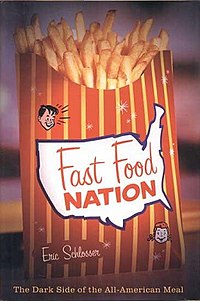Identity Managgement on the Internet
The following article was written as an assignment for the World Regions and Culture class.
Today, I'd like to talk a little about online identity in this presentation.
Identity policy of Facebook
Regarding the online representation of oneself, there are interesting comments in the anthropological paper titled "Facework on Facebook: The presentation of self in virtual life and its role in the US elections." At the end of the paper, it says,
What is said in here is that Facebook or Myspace forced the users to show all of your social relationships with your friends, family, and co-workers to the world. They didn’t allow public / private separation at the time when this article was released in 2008. This identity policy came from the philosophy of Mark Zuckerberg, who is the founder of Facebook. He once said that each person has to have a single identity online. This is easily understood because the more Facebook acquire the personal information of the users, the more it benefits by selling the data to advertising and marketing companies. It's better for its business. However, there has been a huge demand to keep the multiple personas of oneself and control one's representation of self according to circumstances. A part of this problem was solved in 2011 when Google launched its new service called Google Plus. It features a function called Circles so that one can arrange different groups of one's relationships with other friends and show one of them to one's friends accordingly. Facebook also started a similar service called Smart Lists. Now one can show different personas by arranging different friend relationships for each friend.
Single identity online?
But still a single online identity is required both on Facebook and Google Plus. As we often see on the Internet, there are other kinds of self-representation styles such as handle names and anonymity. By examining these types of self-representation, a redefinition of personhood can be done. An article from wired.com argues this issue from a SNS user's point of view. In this article titled "You Are Not Your Name and Photo: A Call to Re-Imagine Identity" published in October 2011, the author argues a different online-identity form by quoting Christopher Poole's speech, who is the founder of 4chan. As many of you may know, 4chan is the site that seems to have more influence over not only the online world but also the real world recently. It is now known as the website where a hacker group called Anonymous (with a capital A) came from (they have attacked multinational corporations, governments, celebrities in the past). The site now has nearly 11 million users and more than a million messages are posted a day. Roughly 90% of all messages on the site are posted under the site-default "anonymous" identity. According to the article, the founder Christopher Poole has a totally opposite opinion to Mark Zuckerberg's. He made a speech at Web 2.0 conference in October 2011 and told the audience that even with Circles or Smart Lists, both Facebook and Google still diminish plural identities online. According to him, Twitter handles identity better than Facebook or Google because it allows handle names, multiple accounts, and even fake accounts. I'm not going into detail about his philosophy here. For more detail, please listen to his speech on YouTube. What I'd like to point out here is that although Facebook is so powerful in the U.S. that it's now used as an ID on the web, there is an on-going debate on identity management that is different from that of Facebook.
Japanese tendency to be anonymous online
When we turn our eyes to contemporary Japan, the situation becomes totally different. As many of you might have already noticed, most Japanese usually do not reveal their real names or faces online. This is often said as the reason why Facebook is not so popular in Japan. This Japanese tendency is also demonstrated by another research group. This academic paper titled "Anonymity in Computer-Mediated Communication in Japanese and Western Contexts - Comparisons and Critiquesis-" is not an anthropological paper, but I think we can find useful data and perspective here. According to the paper which was published in 2010, compared to the U.S. SNS users, Japanese SNS users seem to prefer much greater anonymity online.
Table 1 through 4 show how they actually are (In these tables, "second-tier anonymity" means that an individual adopts a new online identity by using a handle name or an avatar). Here the authors say that there is a distinct degree of an identity exists between real identity and total anonymity. They roughly divide the levels into three degrees of groups and name them "Lack of Identification," "Dissociation of Identity," and "Visual Anonymity." Again I'm not going into detail of their theory here, but you can read the paper online if you would like to. What they basically say in here is to avoid stereotyped Japan-U.S. or East-West cultural dichotomies by examining several social networking sites such as MySpace, Japan's mixi, and Yayoo's Q & A, and see the self presentations there more in detail.
Mixi and 2channel in Japan
As we examine the online identity situation in Japan, this "second-tier anonymity" is quite important because many Japanese SNS users actually use it. As for the SNSs in Japan, each website has its own characteristics of the user's identity. For example, one of Japan's largest SNSs, mixi, used to allow the users to resister under handle names. It once forced the users to use their real names, but finally received a lot of criticism against its revised policy. It now allows the users to use handles. According to an article titled "New Media Practices in Japan Part Two: The Internet" published in 2009, one of the characteristics of mixi is that an average user has very small-scale friend relationship on the site. mixi users have four or less friends in their my-miku (my friend list) and only 4.8% have over 41 friends listed on their friend lists. On the other hand, 2channel, which is said to be the original website of the U.S. 4chan, has probably the largest anonymous online community not only in Japan, but also in the world. It is actually not a SNS. Here, almost all the messages on more than 800 threads are posted under anonymous identity. More than 2.6 million messages are posted in total on the site daily. Because of this massive amount of posting, death threats and other inappropriate messages regarding illegal stuff are often posted.
User communities on Nico Nico Douga
In between these two big online communities in Japan, Nico Nico Douga plays an important role in forming online (and also off-line) communities among young people. It is a YouTube-like video-sharing and live-streaming website. It now has more than 26 million members and is very popular especially with the young generation. It is said that 85% of the people in their twenties are the members of the site. What is different from other SNSs is that the users interact with each other quite often even if they don't know each other at all. Many online communities are created among them and hold streaming lives and chats (Between 30,000 to 100,000 streaming lives are aired a day). They often have off-line meetings and events, too. This is probably because the site is appropriately categorized into different sub-genres such as music, dance, and games. The users of Nico Nico Douga are more topic-oriented unlike the Facebook users who are more identity-oriented. On this site, almost all the users use handles, not their real names. Still, they are encouraged to interact with each other off-line with their online identities. The website itself often holds a variety of off-line events such as concerts and exhibitions in order to give opportunities to the users to mingle with others. A variety of off-line meetings and events are also held among the users. The important point here is that the users usually interact with each other without knowing their real names and social statuses, and their online identities often become their identities in real life. This could be a new form of Japanese socialization process in the digital age. I think self representation in contemporary Japan can be examined more from this aspect.
Conclusion
In conclusion, as of self representation in a society, anthropological studies on the web identity are also done recently. A single-identity policy online is questioned even in the U.S. And although most SNS users in Japan try not to be identified on the web, they seem to have different identity management styles on each SNS accordingly. Finally, here is my question from the text to the class: How does information technology contribute to a redefinition of personhood in contemporary Western societies? My tentative answer for this is that as I discussed earlier, there can be plural identities on the web. A whole-person approach to an individual doesn't seem to work any more when it comes to anthropological studies on the Internet.
Today, I'd like to talk a little about online identity in this presentation.
Identity policy of Facebook
Regarding the online representation of oneself, there are interesting comments in the anthropological paper titled "Facework on Facebook: The presentation of self in virtual life and its role in the US elections." At the end of the paper, it says,
"Almost everyone, in the West too, has relations they would rather keep quiet about... One major task that remains is to uncover the ways in which social networking sites provide different possibilities for both revelation and concealment of aspects of personhood and social reality." (Steffen Dalsgaard 2008)
 |
| Facebook CEO Mark Zuckerberg |
Single identity online?
 |
| 4chan founder Christopher Poole at Web 2.0 Summit |
Japanese tendency to be anonymous online
When we turn our eyes to contemporary Japan, the situation becomes totally different. As many of you might have already noticed, most Japanese usually do not reveal their real names or faces online. This is often said as the reason why Facebook is not so popular in Japan. This Japanese tendency is also demonstrated by another research group. This academic paper titled "Anonymity in Computer-Mediated Communication in Japanese and Western Contexts - Comparisons and Critiquesis-" is not an anthropological paper, but I think we can find useful data and perspective here. According to the paper which was published in 2010, compared to the U.S. SNS users, Japanese SNS users seem to prefer much greater anonymity online.
Table 1 through 4 show how they actually are (In these tables, "second-tier anonymity" means that an individual adopts a new online identity by using a handle name or an avatar). Here the authors say that there is a distinct degree of an identity exists between real identity and total anonymity. They roughly divide the levels into three degrees of groups and name them "Lack of Identification," "Dissociation of Identity," and "Visual Anonymity." Again I'm not going into detail of their theory here, but you can read the paper online if you would like to. What they basically say in here is to avoid stereotyped Japan-U.S. or East-West cultural dichotomies by examining several social networking sites such as MySpace, Japan's mixi, and Yayoo's Q & A, and see the self presentations there more in detail.
Mixi and 2channel in Japan
 |
| 2channel logo with the image |
User communities on Nico Nico Douga
 |
| Streaming video with user's comments on Nico Nico Douga |
Conclusion
In conclusion, as of self representation in a society, anthropological studies on the web identity are also done recently. A single-identity policy online is questioned even in the U.S. And although most SNS users in Japan try not to be identified on the web, they seem to have different identity management styles on each SNS accordingly. Finally, here is my question from the text to the class: How does information technology contribute to a redefinition of personhood in contemporary Western societies? My tentative answer for this is that as I discussed earlier, there can be plural identities on the web. A whole-person approach to an individual doesn't seem to work any more when it comes to anthropological studies on the Internet.



















